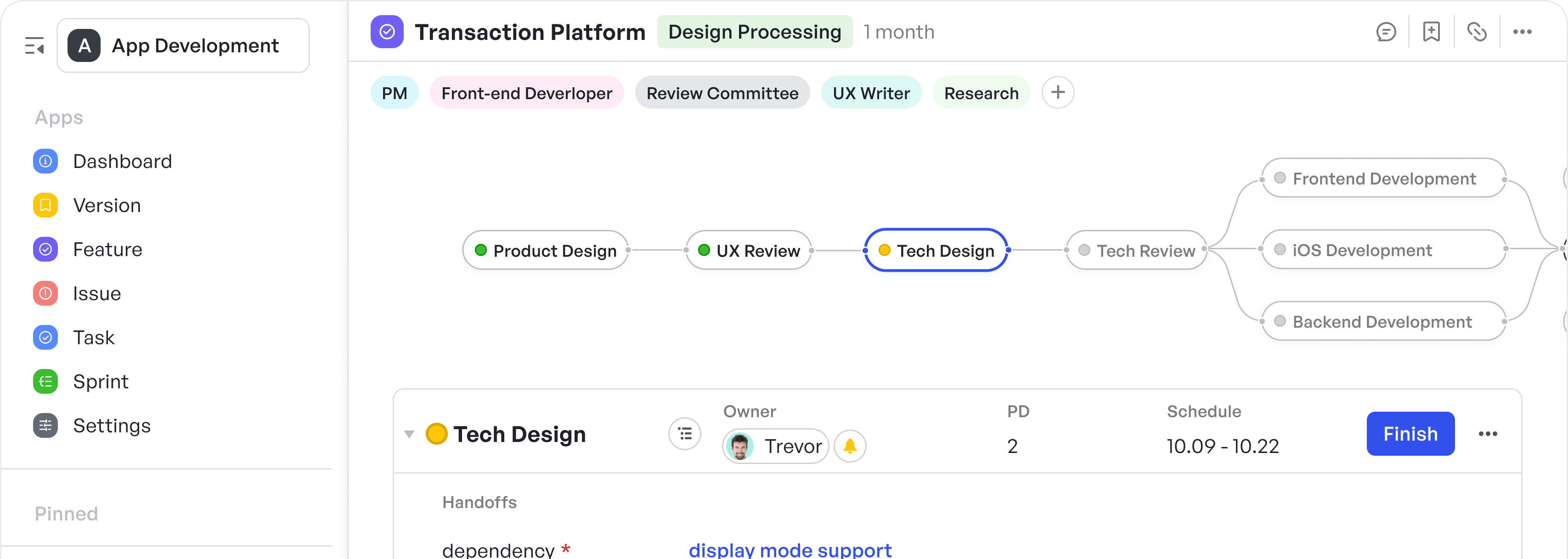Introduction
In pursuing operational excellence, businesses turn to technology to streamline processes, enhance productivity, and cut costs. Business Process Automation (BPA) stands out as an effective strategy to achieve these goals by automating repetitive tasks typically handled by humans. This guide will illuminate the path to successful BPA, from recognizing opportunities for automation to implementing the right methodologies and using real examples and templates to guide your journey.
Section 1: The Foundations of Business Process Automation
At its essence, Business Process Automation (BPA) is about identifying tasks within your company that are ripe for automation and leveraging technology to perform them with minimal human intervention. It's harnessing the power of advanced software systems to replace manual effort—streamlining workflows, eliminating redundancies, and enhancing the speed and accuracy of business operations.
Commonly automated processes span across various departments of an organization:
- Human Resources: BPA can improve the efficiency of recruiting tasks, onboarding processes, employee data management, and benefits administration by automating application tracking, initial screening, and routine HR queries.
Use templates to standardize business process automation.
- Finance: Invoicing, accounts payable and receivable, expense management, and financial reporting can be performed swiftly and with fewer errors when automated, reducing the manual work required in data entry and reconciliation tasks.
- Customer Service: Automation tools can handle routine customer inquiries, issue ticketing, and service requests, allowing customer service representatives to focus on more complex cases that require a human touch.
Use templates to standardize business process automation.
- Marketing: From segmenting audiences to launching targeted campaigns and tracking engagement, BPA can orchestrate various marketing tasks, ensuring consistency and personalized communication at scale.
Use templates to standardize business process automation.
- Sales: Lead management, contact updating, deal tracking, and quote creation can be seamlessly handled by BPA, streamlining the sales process from prospect to close.
Use templates to standardize business process automation.
Implementing BPA often involves a shift from task-oriented to strategic thinking within a workforce. By automating repetitive jobs, employees can dedicate more time to innovation and complex problem-solving, potentially unlocking new sources of value for the business.
Additionally, by establishing a robust foundation of automated processes, organizations are better positioned to scale operations up or down as required, adapt to market changes more quickly, and provide better experiences for both employees and customers.
Ultimately, BPA is not simply about replacing manual labor with machines; it's about transforming your business processes to be smarter, faster, and more effective. By embracing the potential of automation, companies can realign resources towards growth and strategic initiatives, paving the way for enhanced productivity and competitive advantage in the marketplace.
Section 2: Identifying Opportunities for Automation
Spotting the perfect candidates for automation within your business processes is a critical step toward a successful BPA initiative. Here are the strategies to facilitate this discovery:
Evaluate Process Volume and Repetitiveness
Start by looking at high-volume tasks that are performed frequently and consume substantial employee hours. Such tasks, due to their repetitive nature, are often ideal for automation.
Assess Complexity and Standardization
Processes that follow a standard pattern or set of rules without much variation are easier to automate. Conversely, tasks that require a high degree of human judgment or creative input might not be the best candidates for automation.
Identify Bottlenecks and Pain Points
Pain points and bottlenecks can be clear indicators of where automation can be most beneficial. If a certain stage in a process is known to delay the overall workflow, automating it can significantly improve efficiency.
Prioritize Based on Impact
Evaluate the potential impact of automating each process on your business goals. Prioritize tasks that, once automated, could lead to significant cost reductions, compliance improvements, error reduction, and customer satisfaction increases.
Use Process Mining Tools
Advanced process mining software can offer valuable insights by automatically analyzing workflow patterns and pinpointing inefficiencies or variances from the expected process. This analysis can reveal hidden opportunities for automation.
Gather Insights from Staff
Employees performing the day-to-day tasks are often best positioned to suggest which parts of their workflow could be automated. Structured input from staff can yield actionable insights for BPA initiatives.
Continual Review and Adaptation
Identifying automation opportunities is not a one-time activity. Regularly revisiting and reassessing your processes ensures you can adapt to changes and identify new areas for improvement as your business evolves.
Once opportunities for BPA have been identified, the chosen processes should then be mapped out in detail to understand each step thoroughly. This detailed mapping is fundamental to inform the subsequent selection of an appropriate automation tool and methodology, ensuring a smooth transition from the human-driven process to machine precision and speed.
Section 3: Build BPA in Meegle
What is Meegle?
Meegle is a project management platform where teams can visually map out the entire business process. It's designed to automate your workflow efficiently without needing to write any code. You can set up triggers, conditions, and operations that allow tasks to be automatically pushed forward, reducing the necessity for manual intervention in your processes.
Drive Your Business Process Forward Automatically
Implement your business processes into meegle. Processes flow automatically to the next stage as tasks are processed, without manual handovers.
- Map out the entire business process
250px|700px|reset
加载中,请稍后
- Add tasks/forms/external signals to node
250px|700px|reset
加载中,请稍后
- Set the auto-complete mode
When the node owner completes tasks set on the node, fills out the form, or sends a signal from a code platform such as Gitlab, that node can automatically complete and go to the next node.
250px|700px|reset
加载中,请稍后
No-code Automation: Replace Manual Labor
Automation rules can take the workflow one step further.
- Set Triggers: Identify and create triggers in Meegle that start automation based on certain events, like task completion or specific time-based triggers.
- Define Conditions: Add conditions that allow automation to proceed only if certain criteria are met, which helps ensure that automation is applied to the right tasks at the right time.
- Create Operations: Design operations that will automatically happen when the triggers and conditions are satisfied. These can include moving a task to the next stage, updating task status, sending notifications, and more.
By setting up this automated workflow in Meegle, you can significantly reduce manual intervention on routine tasks, thus improving efficiency and allowing team members to focus on more important aspects of the project.
Additional Resources
Here are some selected resources to dive deeper into Business Process Automation:
- Online Courses and Certifications:
- Automation Anywhere University: Offers RPA and BPA-oriented courses and certifications.
- Udemy Business Automation Courses: A variety of courses tailored to different aspects of automation.
- Webinars and Workshops:
- APQC Webinars: Regular webinars on business process improvement and automation.
- AIIM Workshops: Workshops on the latest trends in BPA and digital transformation.
- Books and eBooks:
- "The Ultimate Guide to Business Process Automation": An extensive eBook covering the essentials of BPA.
- "Robotic Process Automation: Guide to Building Software Robots, Automate Repetitive Tasks & Become an RPA Consultant": A book providing insights on RPA, a subset of BPA.
- Industry Reports and Case Studies:
- Gartner Reports: Access to the latest industry reports on BPA.
- Forrester Case Studies: Real-world examples of BPA in action.





